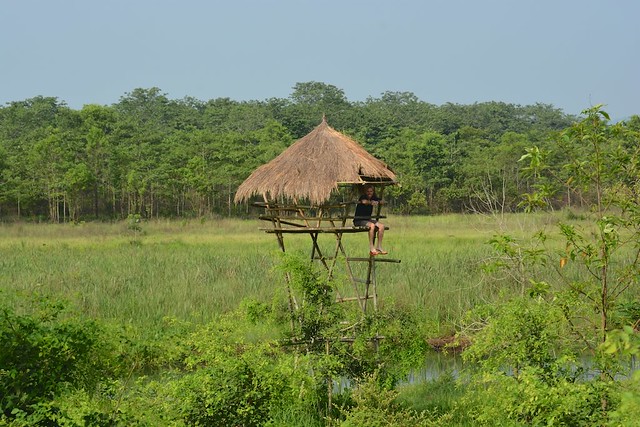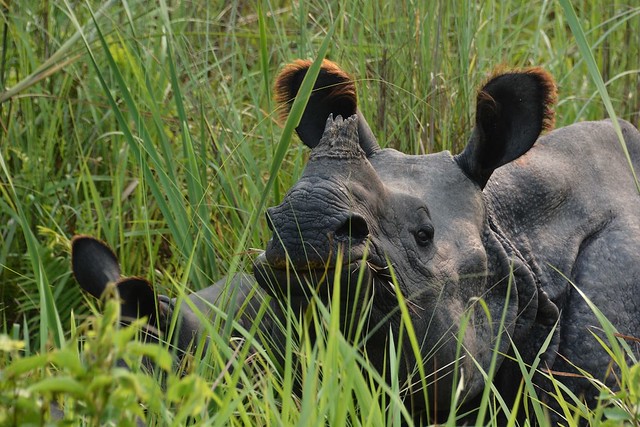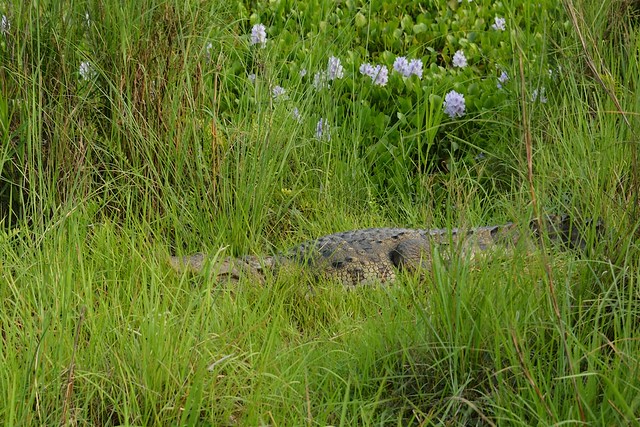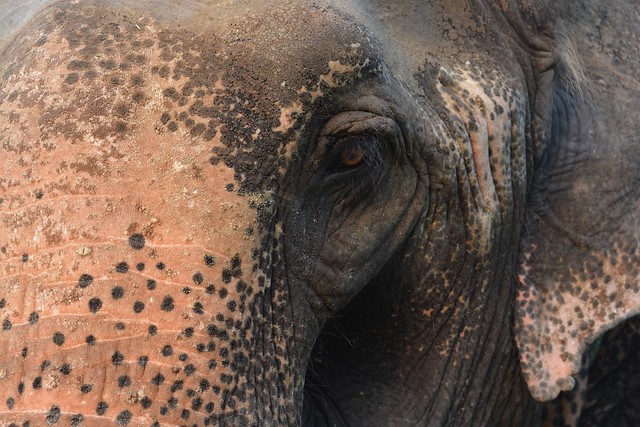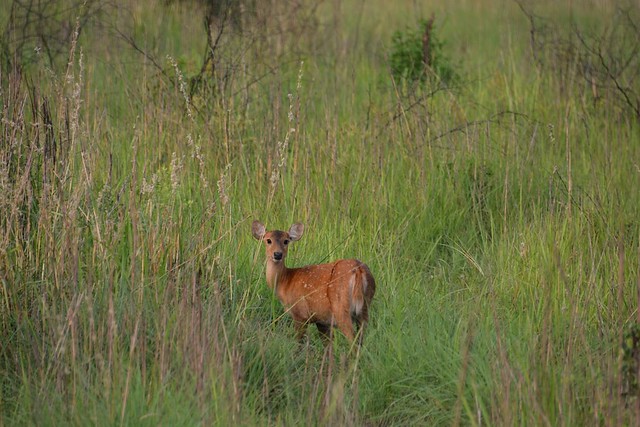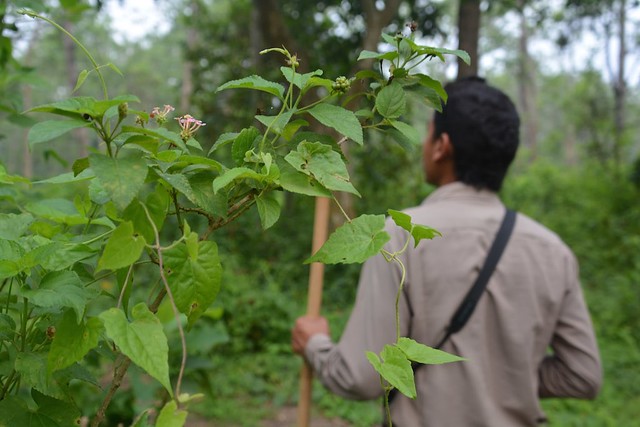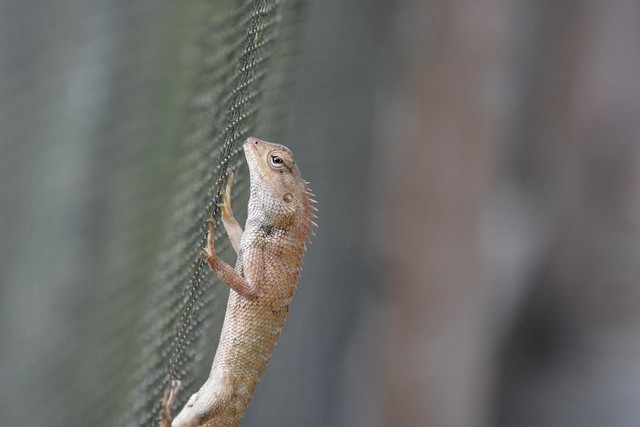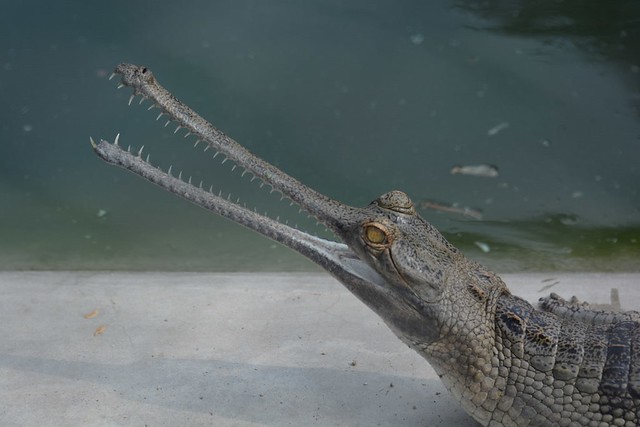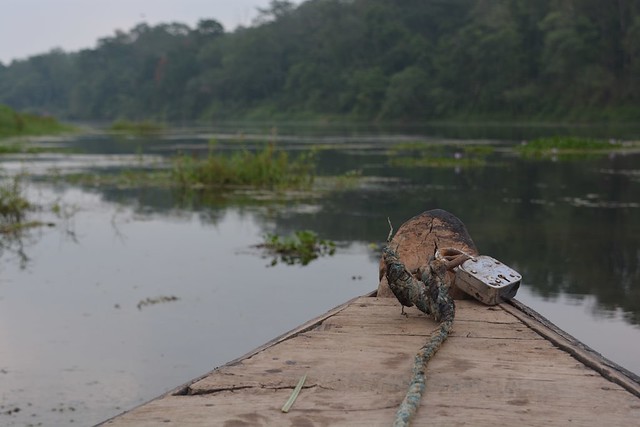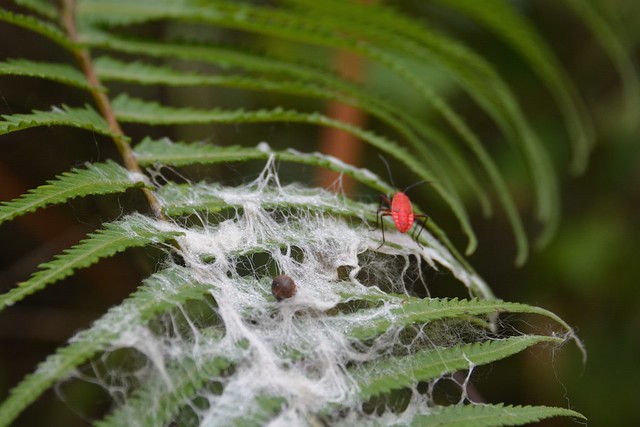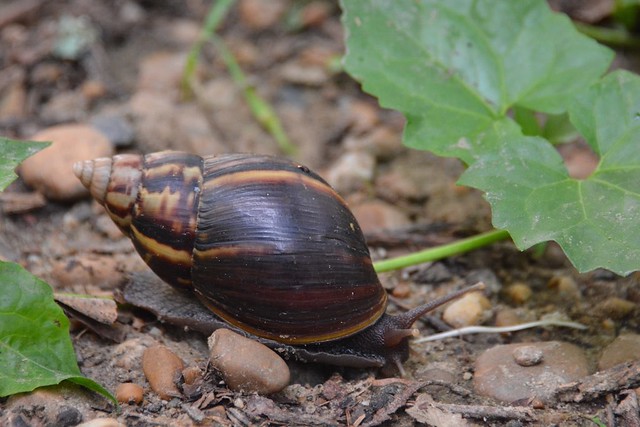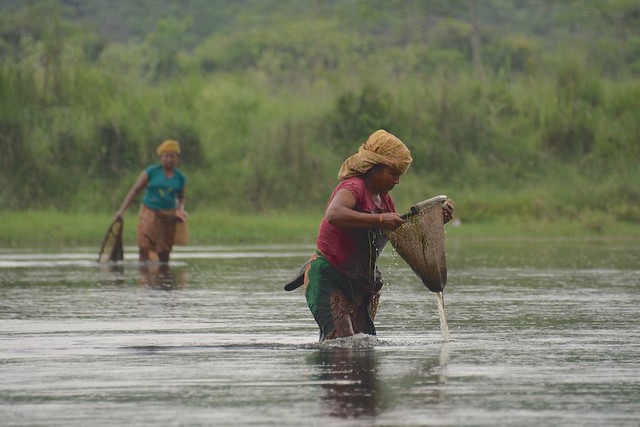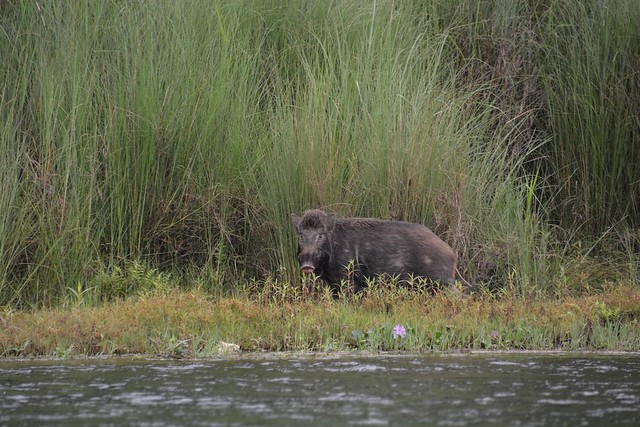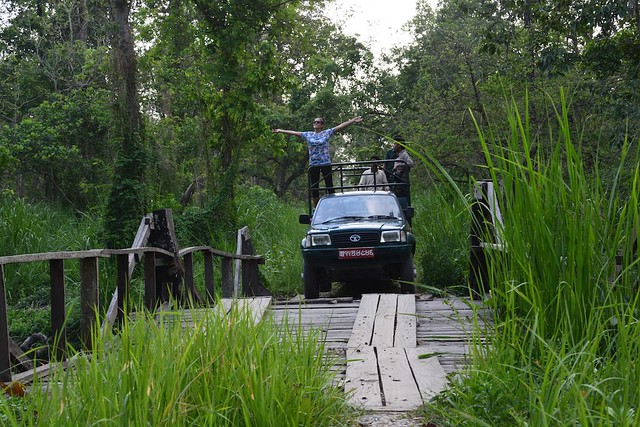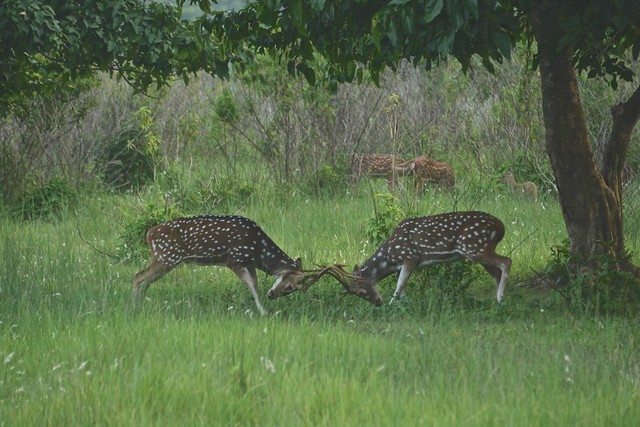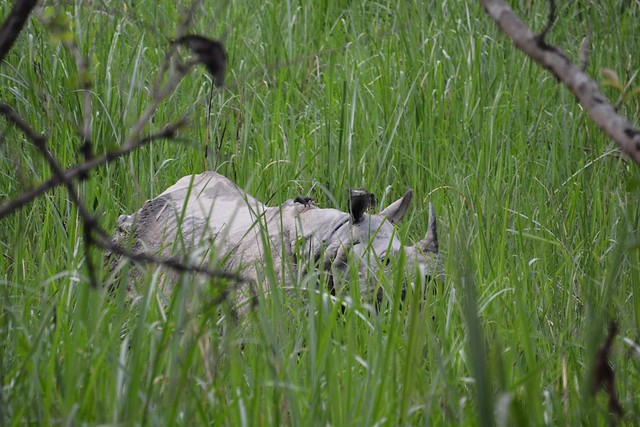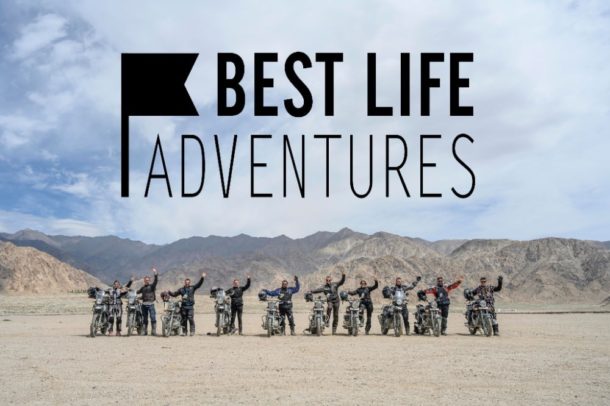If “going on a safari” is on your bucket list, the odds are you haven’t considered living out this dream in Nepal. While Africa dominates the safari space, Nepal’s Chitwan National Park offers unforgettable wildlife encounters which are relatively “off the beaten track”.
Knowing little about the area and its highlights, Ben and I teamed up with Kishor fromTigerland Safari Resort for some expert guidance. Over two jam-packed days, we explored the Nepalese wilderness by foot, canoe, elephant and Jeep. Here’s how our adventures unfolded…
ELEPHANT SAFARI
One of the most popular tourism experiences in Chitwan National Park is wandering through the dense grassland astride an elephant. Having witnesses the mistreatment of these beautiful creatures by tourism operators in other countries, I was initially uncomfortable with the idea of giving this a go. But, after speaking with the trainers at Tigerland Safari Resort and visiting the elephants in their enclosure, I was delighted by how well these beautiful creatures were being treated. If riding an elephant is your childhood dream and you can’t be talked out of it, make sure you choose an operator who cares for its wildlife in a humane way.
Exploring Chitwan National Park by elephant certainly has its advantages. It puts you on top of the world and delivers a prime view, while the wild things go about their business below. The creatures of Chitwan certainly seem unfazed around elephants, which are a natural and familiar sight.
During our sky-high safari, we came across the park’s most notorious attraction – the one-horned rhino. Despite their thick leathery armour and intimidating size, these monster mammals seemed very calm and, oddly enough, smiley. At one point, we also saw a crocodile swimming around our elephant’s toes. How close to nature can you get?!
Another special experience offered by Tigerland Safari Resort is the opportunity to bathe an elephant in the local river. After climbing on its bare back with less grace than a newborn calf, you make the journey to the water together and enjoy a communal drenching. As the elephant loads its trunk and unleashes a powerful jet down its back, your childhood Jungle Book dream comes to life. It’s a magical moment – one you’ll never forget.
A small tip if you decide an elephant safari is right up your alley: wear thick, long pants, as they will save your thighs from severe “elephant burn” (their hair isn’t particularly soft!). Wandering through the whip like grass can also lead to a nasty cuts, so chuck on a long-sleeved top and closed-in shoes, too.
WALKING SAFARI
Exploring Chitwan National Park by foot is the best way to uncover the majesty of its finer details. As you enter the dense jungle and tredge your way through the blanket of lime green foliage, your senses stand to attention. The complex natural aromas tantalise your nostrils, while the high-action theatre sends your eyes on a wild chase (monkey, peacock, boar, spotted dear, lizard, slug, sloth, strange red bug thing – where to look first?).
Then there’s the spectacular symphony of the birds and bugs. They lead the jungle in song and enchant its human visitors. Our savvy guide, Kishor, helped us decipher the different sounds and match them to their makers. Before long, he’d joined the jam session and started mimicking their melodies. It was awesome!
Our guide’s jungle genius didn’t end there. I’m not usually one to get excited about plants; but, once Kishor explained how the different species were used for local medicine, cuisine and craftsmanship, it was impossible not to be impressed.
CANOE SAFARI
Where there’s water, there’s life. Exploring Chitwan National Park by canoe will undoubtedly give you glimpses into its residents’ daily habits. Rhinos looking for a cool bath, deer stopping by for a quick drink, birds hunting for fish, locals chilling out…the rivers are hubs of constant activity.
It’s best to jump in a canoe for sunrise or sunset. The sun’s reflection on the water in the golden light makes for dreamy photographs. Plus, you’ll get to see the “changing of the guards”, as the nocturnal creatures make way for the daytime dwellers (or vice versa). The atmosphere at start and end of the day is both buzzing and beautifully calm – it’s a cool experience.
JEEP SAFARI
Chitwan National Park covers a whopping 932km2. If you want to traverse a decent chunk of this land and increase your chances of spotting the notoriously rare Bengal Tiger, a jeep safari is the way to go.
While you’d think the sound of a roaring engine would limit your chances of any noteworthy sightings, it’s strangely not the case. The drivers are pretty savvy and know when to take things slow ‘n’ steady. It’s a good idea to have binoculars or a camera with a zoom lens on hand, just in case you have to keep your distance.
As you Jeep-surf your way around the park’s like something out of Jurassic Park, you’ll get a chance to appreciate its sheer diversity. From the lush sal forest and eerie water marshes to the rippling elephant grassland and peripheral villages, every part of the park offers a different story and unique vibe. It’s easy to see why many travellers choose to stay a while.
As you can see, Chitwan National Park is the perfect place to go on safari. Whether you choose to explore the reserve by elephant, foot, canoe or Jeep, you’re guaranteed to experience many precious wildlife encounters. So, charge up your camera, grab your binoculars and step into the wild.
QUICK FACTS ABOUT CHITWAN NATIONAL PARK
- Chitwan means “Heart of the Jungle”.
- Established in 1973, it’s the first national park in Nepal.
- It was added to the UNESCO World Heritage List in 1984.
- It’s one of the premier wildlife-viewing national parks in Asia.
- It offers a once-in-a-lifetime chance to spot the royal Bengal tiger and encounter One-Horn Rhinos.
- Many of the park’s animals were lost during the decade-long Maoist insurgency, when the Nepali army were too preoccupied with the conflict to provide adequate protection against poachers.
- In the 19th Century, it was protected as a hunting reserve for Nepali and foreign aristocrats. Britain’s King George V and his son Edward VIII managed to slaughter a staggering 39 tigers and 18 rhinos during just one blood-soaked safari to Chitwan in 1911.
- In March 2014, Nepal celebrated a full year without poaching of endangered animals.
FOLLOW THE AUTHOR
Instagram / @SopheeSmiles
Twitter / @SopheeSmiles
Facebook / Sophee Smiles
Blog / sopheesmiles.com
